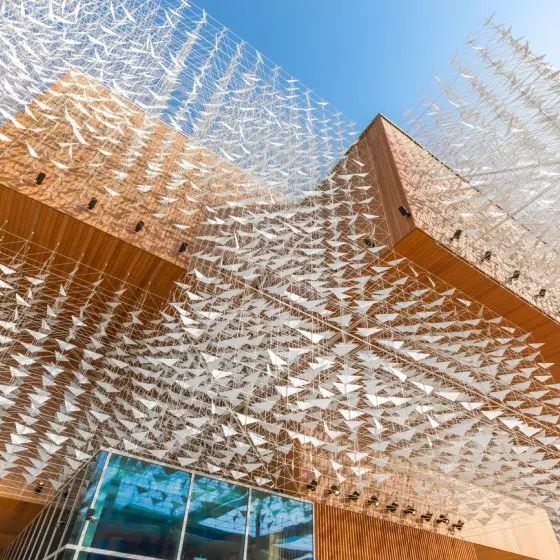The COVID-19 pandemic has had a significant impact on the operation of shopping streets in Polish cities. Catering and grocery stores are crowding out other industries, limiting the offer to passersby. The percentage of vacancies along major arteries is also growing.
According to a Colliers survey conducted at the beginning of the third quarter of 2021, the pandemic has changed not only the number of vacant units, but also the industry mix and rents. The survey , conducted in Warsaw, Krakow, Wroclaw and Lodz, shows that while restaurant and grocery tenants invariably dominate the spaces in Polish cities, their prevalence is growing as a result of the closure of many fashion stores. The number of catering establishments remains at a similar level, while the number of grocery stores is growing - which in practice means further monopolization of the market by franchise chains such as Żabka. Shoe and leather goods stores have disappeared in 1.5 years, as well as small family-run service establishments or stores, often run for generations. Banks and financial institutions are also disappearing from the streets.
more vacant buildings
Photo: Colliers
Compared to the same period of 2019, all analyzed cities saw an increase in the number of units available for rent - by an average of 4.4% - with the largest increases in Łódź and Wrocław (a change of 6.5% and 3.6%, respectively).
Powisle power plant
photo: Adrian Grycuk / Wikimedia Commons
At the same time, mainly in Warsaw and Krakow, there was an increase in the number of operating outlets. This is a result of the opening of Elektrownia Powiśle and Browary Warszawskie, among others.
krakow
Floriańska street
photo by Maksym Kozlenko / Wikimedia Commons
In Krakow, experts noted a 3.4% increase in empty units compared to 2019. Clothing, jewelry and shoe stores were the most frequent victims of the pandemic. Despite the closure of several eateries, the industry is slowly recovering, with 30 new establishments in the city.
boat
Off Piotrkowska
photo: Zorro2212/ Wikimedia Commons
On Lodz's main shopping street, Piotrkowska Street, the pandemic has brought an increase in the number of establishments - the section from Liberty Square to Marszałek Józef Piłsudski Avenue now has 350 outlets, 10 more than in 2019. This is a result of the commissioning of the Hi Piotrkowska building, which combines office and hotel functions. There are also two retail units on the first floor of the building, facing Piotrkowska Street. Further supply in the retail space market will be boosted by further completed developments such as Fusion and Monopolis.
warsaw
Jerozolimskie Avenue
photo: Panek / Wikimedia Commons
The largest number, as many as 3,500 units, was analyzed in the capital. As the study's authors note, the city's investments in public space - including limiting and slowing down traffic and creating pedestrian-friendly spaces - increase development opportunities for premises located on Warsaw's main streets. Similar changes planned for Jerusalem Avenue in the coming years, may help reverse the unfavorable trend. On the section from the De'Gaulla Roundabout, through the Dmowskiego Roundabout, to Zawiszy Square, vacancy rates have increased by 14%.
wrocław
Kosciuszko Square
photo: Barbara Maliszewska / Wikimedia Commons
An analysis of the Wrocław market brings a 12% increase in vacant units on eight major downtown tracts. This is dominated by gastronomy, which accounts for almost half of the operating outlets. Colliers recorded the largest increase in vacancy compared to the same period in 2019 on Wrocław's retail streets in Kosciuszko Square.

































